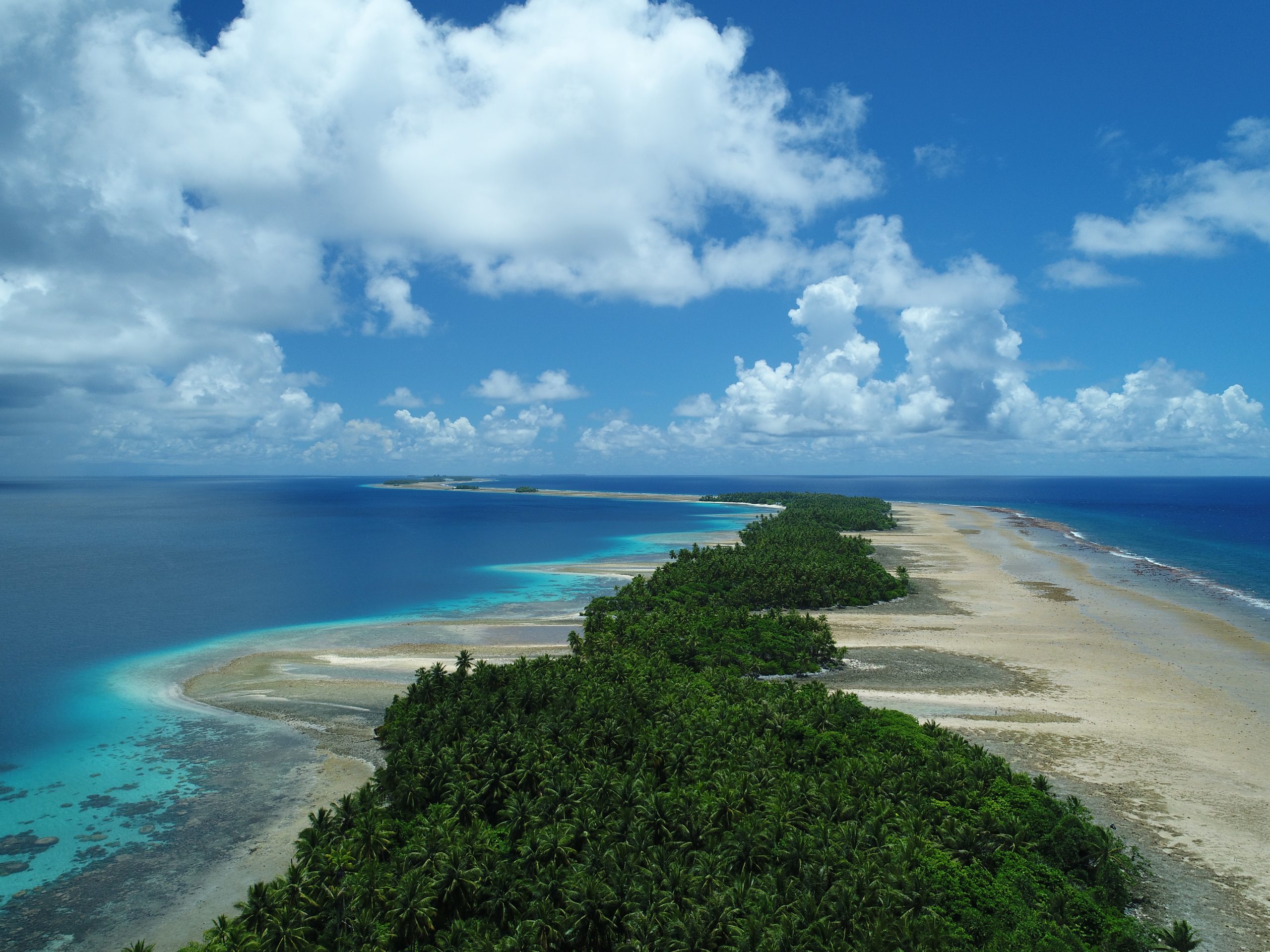To save low-lying atolls, adaptive measures need to start now
 Windward reef islands of Majuro atoll. PC: Kristian McDonald
Windward reef islands of Majuro atoll. PC: Kristian McDonald
Low-lying reef islands like the Pacific Ocean’s Marshall Islands could become unstable by midcentury if measures to adapt to rising sea levels are not implemented, according to new research led by School of Ocean and Earth Science and Technology earth scientists.
Coral reef atoll islands are home to thousands of people around the world, but researchers still don’t agree on how sea level rise will impact these islands and their communities. Conflicting scientific messages generate confusion and can hinder progress in building community resilience to accelerating sea level rise.
In the study published in Earth’s Future, Haunani Kane and Chip Fletcher, from the Department of Earth Sciences, used an integrated model that incorporates the 5,000-year geological history of the Marshall Islands with updated emissions and sea-level rise projections to understand what will happen to atoll islands over the course of the century. The results suggest higher water levels will rapidly increase flooding by extreme tides and more destructive waves. Salt water inundation will increasingly inundate the Marshall Islands and deteriorate their freshwater resources and agro-forests as early as in the decades leading up to mid-century.
Islanders can proactively bolster their islands’ natural ability to adapt and change by preserving and restoring reef ecosystems that protect coasts and provide new sediment to the structure of the island. Communities can reduce their exposure to climate-related hazards with nature-based and biocultural solutions such as wetlands, vegetated coastal buffers, aquaculture, and other projects that increase the distance between the shoreline and community assets. Slowing coastal erosion and wave inundation while increasing habitat and biodiversity, carbon sequestration, recreation opportunities, and cultural activities, are important for increasing resilience, especially now, in the first half of the century.
Reef islands are low-lying islands made up of wave deposited sand and coral. They support lush agro-forests and thin rain-fed freshwater aquifers. Researchers have debated how these islands will be affected by climate change-driven sea-level rise because they have not been subjected to rising seas before. Most of these islands formed in the past few thousand years as sea level in the tropical Pacific was lowering in response to deepening ocean basins surrounding formerly glaciated northern continents. Now, because of global warming, sea level is rising and the rate of rise is accelerating.
“Some scientists argue that because of their geologic history, reef islands could be resilient to human-caused sea-level rise, but most such studies consider islands and their people to be separate entities,” said Kane, a coastal geologist with the University of Hawai‘i at Hilo and lead author of the new study.
“We found that as really being disconnected from the way that we live on islands,” she said. “This study eliminates some of the confusion and the gaps in knowledge related to how sea level rise will impact low-lying islands because it considers the impacts upon and resilience of both the place and the people.”
To address this disconnect, Kane and Fletcher developed a model that treats islands and their people as inseparable components. The model uses a mixture of fossil data, historical photographs, and modern observations of tide and wave events to understand the geological processes of the Marshall Islands over 5,000 years. Using this information about how the islands have grown and responded to past changes over time, they projected each island’s ability to adapt to the increasing rate of sea-level rise.
They found that individual islands will respond slightly differently depending on their shape and location.
“Even within one nation, there are differences in how islands will respond,” said Kane.
Broadly, however, the researchers found the rate of sea level rise will be at least 10 times faster than what the islands were exposed to in the geologic past, and by 2080, sea levels will be higher than anything the islands have experienced in their lifetimes. Through analysis of fossil reef cores and sediment, they realized the island’s structure was largely made up of just one species of foraminifera, single-celled organisms with a hard shell. Currently, no new foraminifera are being deposited on the islands. As sea levels rise, waves could wash more of these island-building organisms ashore, but the processes that encourage such growth involve big waves and a dynamic coastline.
“That can be a good thing for the islands, but it could make it difficult to live on an island,” Kane said.
Encouraging the islands’ natural ability to grow and change could save them, but living on such a dynamic landmass comes with trade-offs. The researchers stress that they do not seek to tell islanders what to do with their study, only to arm them with information based on the latest science.
“The people of that place have the ultimate authority over the decisions that they think are best,” Kane said.
Content courtesy of Rachel Fritts, Eos Science Writer
Read more on Civil Beat and UH News.




